Well, we are in the thick of it now. The thick, blowing sand of the Western Sahara Desert. In fact, we are actually in a UN administered territory called Western Sahara. (The Moroccans like to claim it as their southern province and the rebel POLISARIO Front refers to the land as the “free zone.”) Whatever you want to call it, politics aside, it is definitely the desert. It is strange that a place so empty and so seemingly void of life can spark so much interest and arouse so much curiosity in people. On the surface, it does not seem like the desert has much to offer, but nothing can be farther from the truth, and when it comes to things to offer, the Sahara has a full plate to chose from.
Driving through Western Sahara is a bit odd. Obviously there are not too many people living here as daytime temperatures soar well above 40 degrees and plummet to next to nothing after the sun goes down, but signs of people seem to be everywhere. Signs of life come in the form of ramshackle tents distributed quite randomly amongst the rocks and sand dunes. Sings of life come in the form of blown-out tires scattered along the side of the lone road that meanders its way south to Mauritania… there are other tracks further inland, but the risk for exploration is high as landmines have been buried all over the place. Unfortunately, signs of life here in this part of the desert also come in the form of trash which seems to accumulate everywhere. Although the plastic bag may be practical, when you see “plastic bag bushes” hundreds of miles from any form of civilization it makes you wonder if they are really beneficial at all.
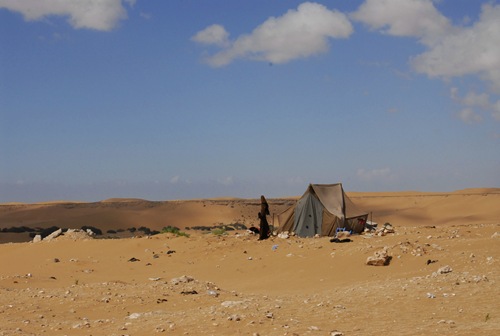
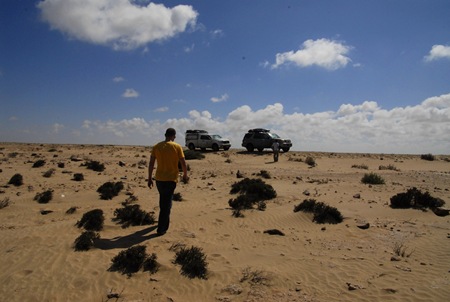
Navigating the trash and hopefully the landmines
Signs of non-human life are even more evident in the desert. Snakes and critters of all types reside here and although they are extremely difficult to spot due to both their camouflage and calculated movements, their tracks can been seen throughout the sand. Underground rivers wind their way through the dunes, completely hidden from view and the only indication that there is water around is the occasional patch of green grass or the even less frequent oasis. No mirages just yet.
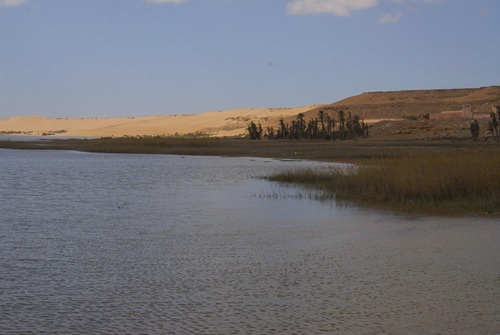
Desert Oasis
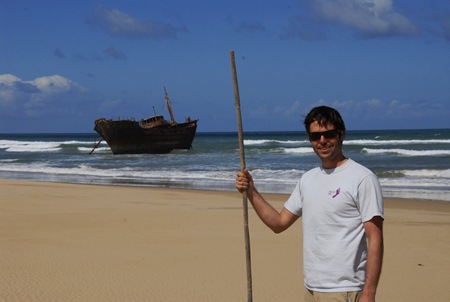
Mark scouts out a shipwreck we spotted from the road
It is a bit cliche, but camels are also part of the desert and the Sahara is no exception. I am not sure if they are completely wild, but camels here freely graze wherever they chose and sometimes that tends to be in the middle of the road. When you come to a place like the Sahara, you hope that you can catch a glimpse of a camel outside of a typical tourist attraction. For us, this glimpse started in the form of concrete structures which gave way to road signs alerting you to their presence to finally seeing live camels roaming about the desert plains in giant herds. I have to admit, camels are a strange breed of animal. There is nothing quite like a camel and there is no other animal I am aware of that communicates by using what sounds like deep, prolonged belching. In any regard, seeing the silhouette of a camel herd grazing against the backdrop of a setting sun in the Sahara desert is up there with one of the coolest things I have seen in my life.
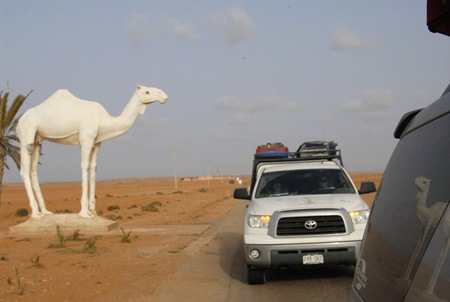
First sign of camels in the desert
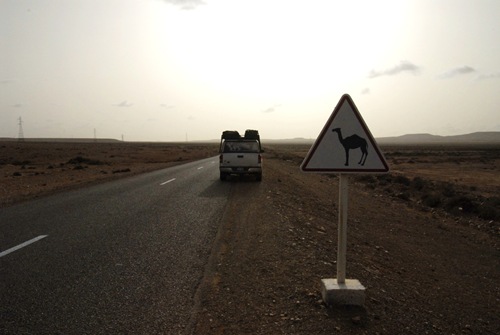
Second sign, literally, of camels in the desert
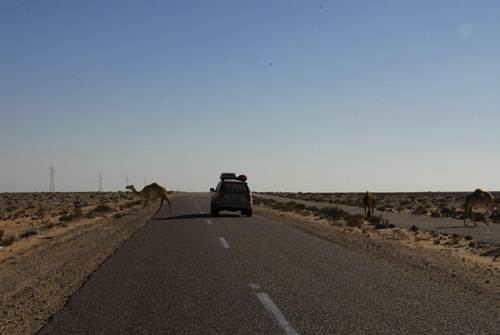
Almost hitting camels in the desert
We have only been in the desert for a few days and the peace and tranquility that you find here can sometimes blind you to the fact that although beautiful in countless ways, the desert can also be a very dangerous and inhospitable place. So far, the desert has been good to us and we can only hope that the trend continues because we still have a long way to drive before the sands of the Sahara start to give way to the lush vegetation of equatorial Africa.
